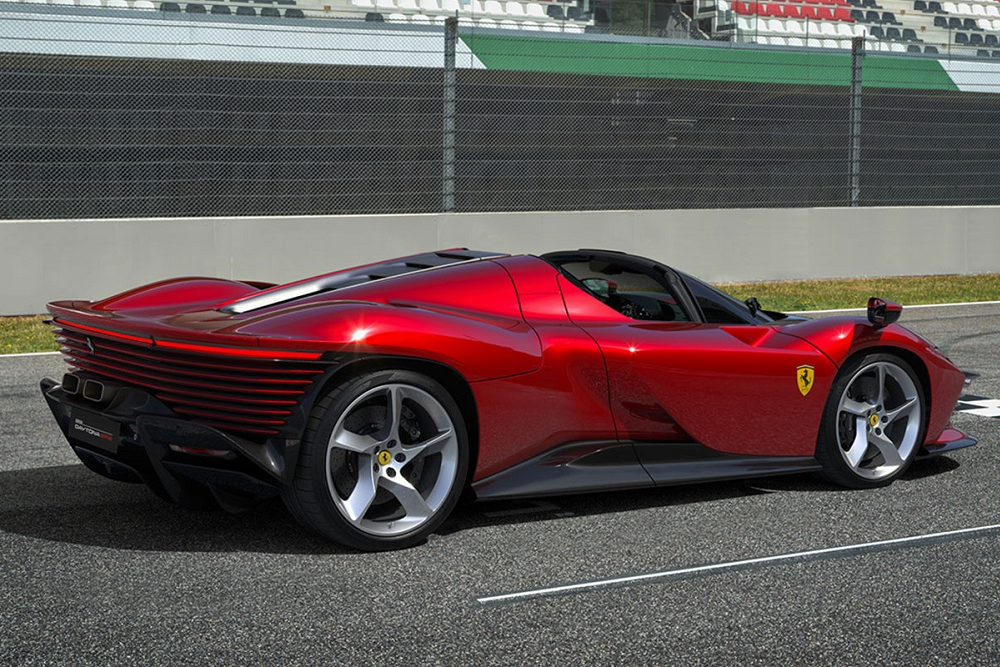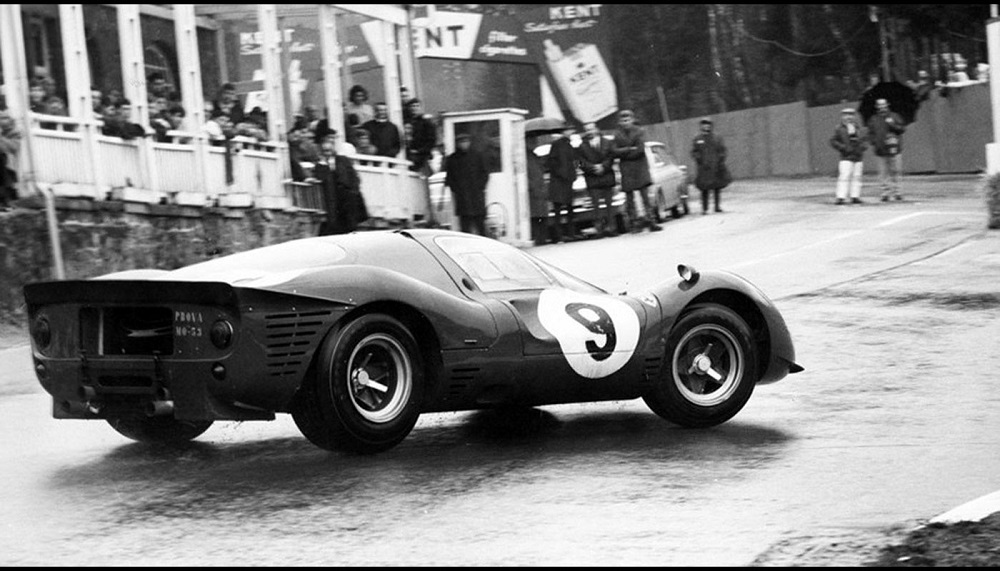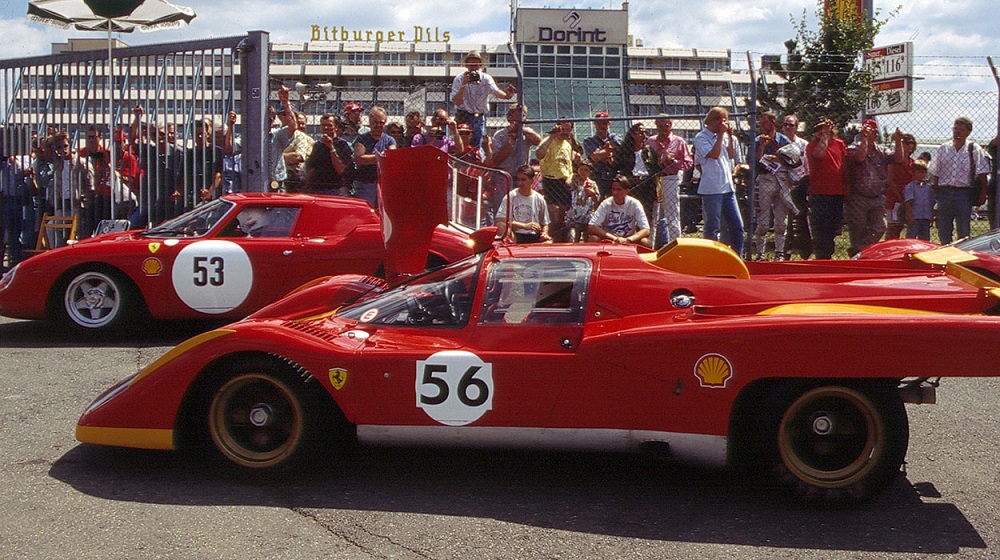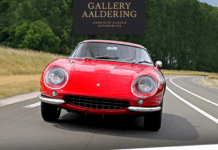Powered by a mid-engine, 6.5 litre V12 that is also used in the 812 Competizione, (the most powerful combustion engine ever built by Ferrari), and home to technological advancements such as the Human-Machine Interface (HMI) found in LaFerrari and the SF90 Stradale, the Ferrari Daytona SP3 is unquestionably a car designed for the demands of the modern era.

However, as it took to the Mugello circuit for the first time, flanked by two 330 P4 Ferraris, few could mistake the racing pedigree that sat at the heart of its design. From the wing mirrors positioned on the front arches, to the sweeping lines, the mid-engine and even the Targa body with removable hard top, the Ferrari Daytona SP3 encapsulates the spirit of that wonderful era of closed wheel racing: the sport prototypes of the 1960s and with it, the Ferrari P series.
No matter what the demands, be it a few high-speed hours on the F1 circuit, or an entire 24 hours of Le Mans, the three core fundamentals of a race car – engine, chassis, and aerodynamics – rarely change. And it was the sports prototype era where those three fundamentals were pushed to their very limits.

The premise of a sports prototype car is straightforward. While production-based race cars have road-going, street legal equivalents that are available for consumer purchase, sports protypes are one-offs built solely for the track, which means design and performance can be honed to winning races rather than thinking about distractions, like indicators, or where the number plate might sit.
And it was here that some of Ferrari’s most innovative cars competed, with racing machines such as the 250 P at the beginning of the decade, through to the 24 Hours of Daytona winning 330 P4 at the end of the ‘60s and into the ‘70s with the huge 7-litre machines such as 712 Can-Am.
All of these cars, either through engine placement, chassis design or aerodynamic innovations, have had a clear and direct influence on the Ferrari Daytona SP3. While the 330 P4 has clearly had the strongest influence, both in design and name (the Daytona SP3 badge is a nod to the 1-2-3 Ferrari finish at the 1967 24 Hours of Daytona) it is not alone in providing inspiration derived from the wealth of innovation that emerged from the sport prototype era.
The sweeping, elegant front wings can clearly be seen on the Ferrari 312 P, while the pronounced doors, that help manage airflow from front wheels are also an integral part of the 512S, that huge all-alloy V12 5-litre racing machine that took part in the Manufacturers’ World Championship in 1970 and 1971, winning at Sebring and Kyalami. Even the cockpit, integrated directly into the high-performance chassis, takes inspiration in part from the 350 Can-Am, built as an evolvement of the P3/4 series for the Canadian and American circuits of 1967.
Ferrari’s role in sports protypes came to an end in 1974 when the Scuderia decided to turn their attention solely to Formula 1, having bowed out of the category with a second-place finish in a 312 PB at the 1973 24 Hours of Le Mans. For the Prancing Horse, it was the end of a golden era of closed wheel racing, an era that has once again been brought to life through the arrival of the Ferrari Daytona SP3.
If you are interested in more news click here.












